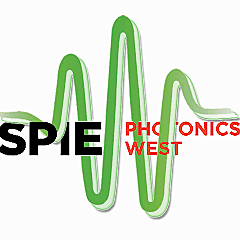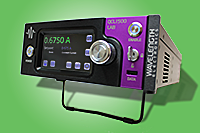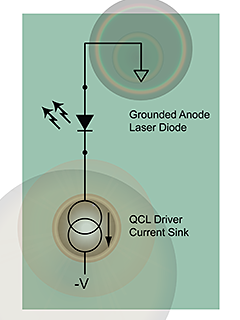
You are invited to visit our booth (#2406) at Photonics West Feb. 10-12 in San Francisco. The new Low Noise QCL Laboratory Instrument will be available for hands-on operation. We are also hosting a demonstration of the new QCL Laboratory instrument Feb. 10 at 10:30 in Demo Area 1 in the South Hall. We will be showing a wide range of compact temperature control solutions: efficient PWM control in the WTCP model (up to 5 A), high stability in the WTC controller (up to 2 A), low cost in the WHY controller (up to 2 A).
Our team of engineers would love the opportunity to talk with you about your application. Feel free to make an appointment ahead of time if you’d like to look more in-depth at your project.

Subscribe to our newsletter for tips, techniques & product updates.
Several newer Quantum Cascade Lasers are operating at lower voltages, some as low as 10 V. Our clients have successfully and safely operated these with both the QCL OEM drivers and the QCL LAB drivers.
With the QCL LAB driver, you simply reduce the Voltage Limit on the LIMIT screen (instructions are in the User Guide, page 25). With the QCL OEM, the safety circuits are hard-wired. Request the QCL OEM driver of the appropriate current level and Product Variation 48 (PV048) to operate the QCL OEM with an 11 V QCL limit. Other product variations are possible. Contact your Applications Engineer to discuss your application and how we could reduce your cost or assembly time.
Low Noise Drive for Laser Diodes
The new QCL Laboratory instrument offers the lowest noise operation of any commercially available driver. This enables much lower detection thresholds in materials sensing systems.
The QCL driver can also be used with Laser Diodes – if the anode of the Laser Diode is, or can be, grounded and it is operated in constant current mode.
What would low noise Laser Diode operation enable for your application?
- Better wavelength stability?
- Better signal to noise ratio?
- Better repeatability between scans?
Let us know how you can improve your system measurements with reduced electrical noise.
Using the Compliance Voltage Specification
Most of our drivers and controllers are current sources. This means the current level is the focus of the control system. The voltage across the output device (laser diode, quantum cascade laser, thermoelectric) will develop according to Ohm’s Law: Voltage = Current * Impedance.
The voltage varies with the resistance of the load. The current source does not force a particular voltage across the output device. The Compliance Voltage specification of a current source indicates the maximum voltage that can be provided to the output device at full current, not the voltage that will be delivered. For example, when driving a thermoelectric, the impedance can be estimated by the constant temperature V-I curve (see image above). If your thermoelectric needs 10 V at 4 A, then its impedance is roughly 2.5 Ohms (10 V / 4 A). If the controller can only provide up to 5 V at 4 A, the output will be Compliance Voltage limited. Again, Ohm’s Law rules. 5 V = IMAX * 2.5 Ohms; so IMAX would be limited to about 2 A. Pick a controller or driver with a compliance voltage large enough to support your output device at the desired operating current.
We invite you to contribute topic suggestions, questions, and general feedback. Wavelength will incorporate as much reader input as possible.
Click to Submit





